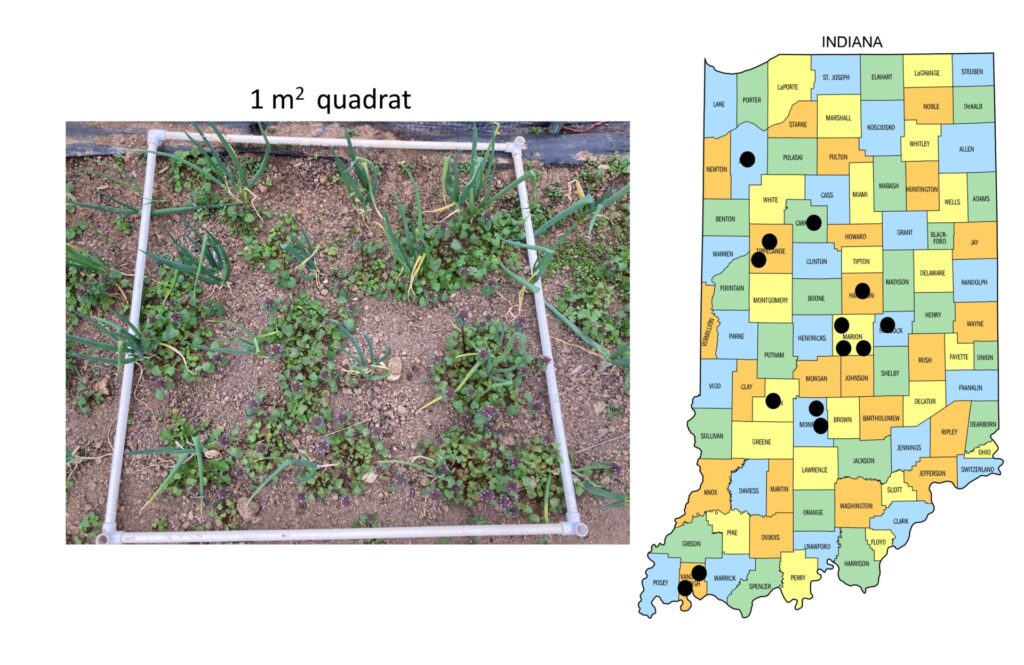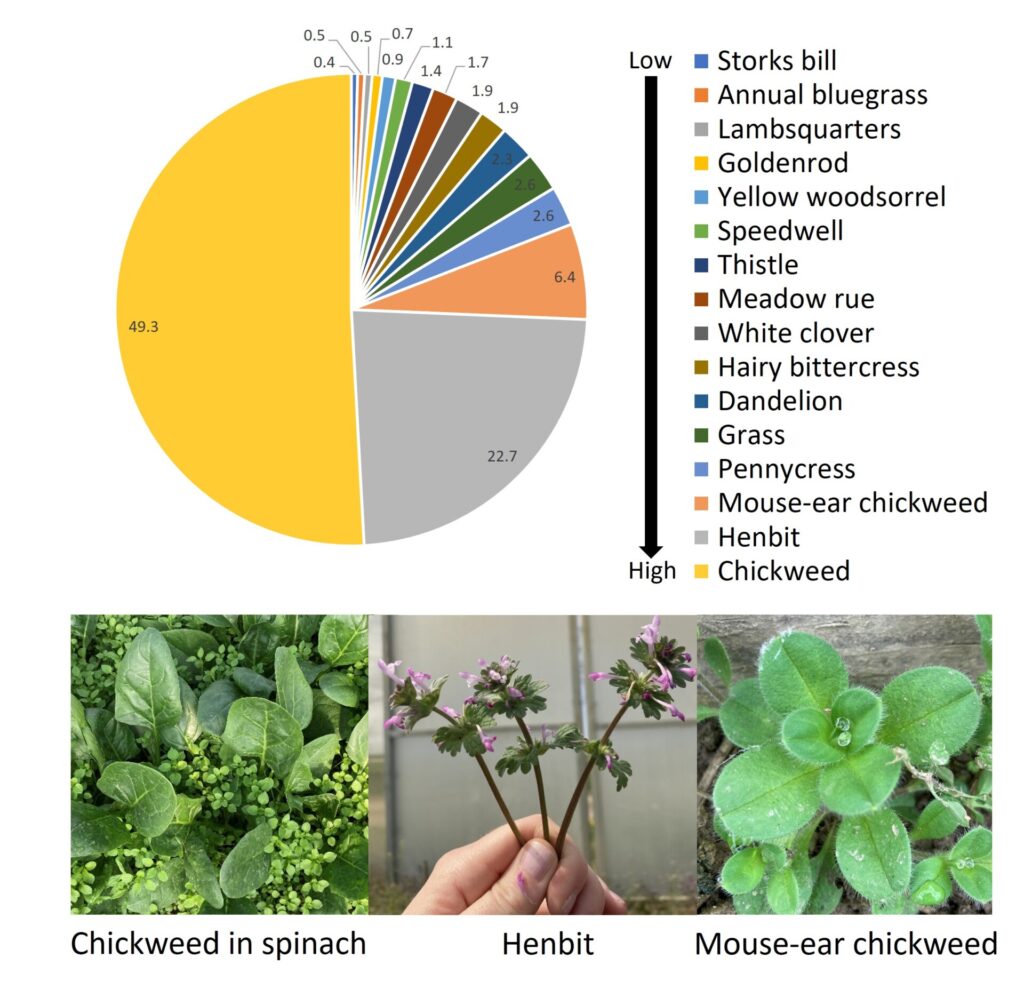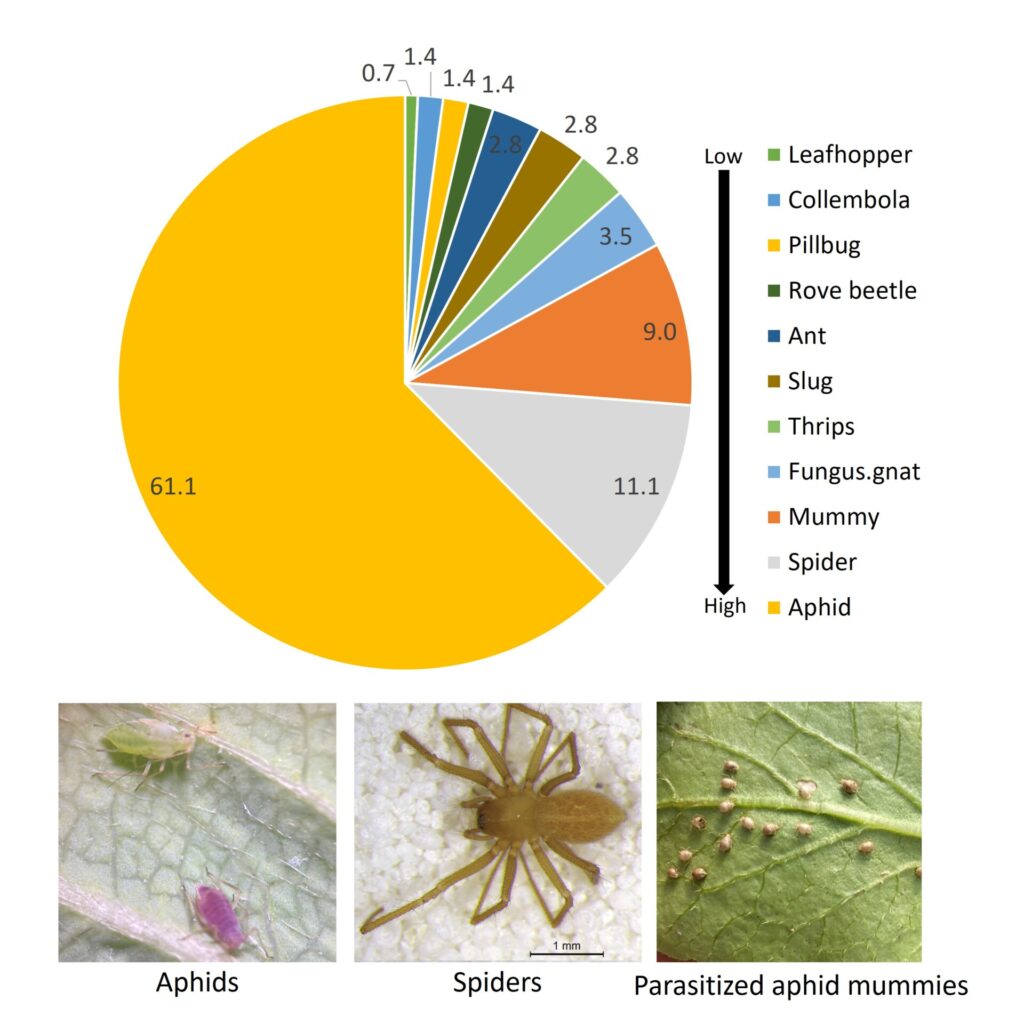Background
High tunnels provide a hospitable environment for crops and insect pests, but little is known about the weed community present within them. From 1 December 2022 to 17 March 2023, we visited 14 farms monthly across Indiana and used a quadrat-style approach to measure weed pressure (0% to 100% weed coverage per quadrat) and identification (Figure 1).

Figure 1. The quadrat used to estimate weed pressure at 14 high tunnel farms in Indiana (farms are indicated by the black dot on the map) (Photo by S. Willden).
Average weed coverage was about 19 % per 1 m2 quadrat and varied by site. Generally, higher weed pressure was observed when no ground cover was present (i.e., landscape fabric, woodchips, hay, or plastic mulch). Dominant weeds identified were chickweed (Stellaria media), henbit (Lamium amplexicaule), purple deadnettle (Lamium purpureum), and mouse-ear chickweed (Cerastium vulgatum) (Figure 2). Chickweed and henbit are both winter annual weeds, while mouse-ear chickweed is considered a perennial but can grow similarly to a winter annual, depending on the climate.

Figure 2. Relative percentage of weed specimens identified in high tunnels on farms from Dec 2022 – Mar 2023 (Photos by S. Willden).
Winter weeds and pests
The majority of insects identified on weeds under high tunnels were aphids (Figure 3). Fungus gnats, thrips, slugs, and pillbug pests were also observed but in low abundance. Densities of aphids were highest on sticky mouse-ear chickweed (Cerastium glomeratum), hairy bittercress (Cardamine hirsuta), henbit, and speedwell (Veronica spp.).

Figure 3. Relative percentage of invertebrate specimens identified on weeds in high tunnels on farms from Dec 2022 – Mar 2023 (Photos by S. Willden).
Winter weeds and natural enemies
Spiders and aphid parasitoids (determined by the presence of aphid mummies) were the most common natural enemies present on weeds in high tunnels. Among the weeds, the highest ratio of natural enemies to pests was observed on pennycress (Thlaspi arvense), mouse-ear chickweed, wintercress (Barbarea spp.), dandelion (Taraxacum officinale), yellow wood sorrel (Oxalis stricta), and white clover (Trifolium repens). No pollinators were observed on weeds during winter.
Conclusion
Our study indicates that some weeds may be important bridges between cropping seasons under high tunnels, while others may provide refuge or supplemental food sources for predators and parasitoids, like companion plants. Before confirming which species are important pest bridges, aphid species identification is needed and is currently underway. This will decipher whether the species on the weeds are the same as those infesting the cash crop. If not, they have the potential to serve as a reservoir for natural enemies, serving much like a banker plant system implemented in greenhouse production for pest management.
We recommend using the following guide (https://weedid.missouri.edu/) or the iNaturalist seek app (https://www.inaturalist.org/pages/seek_app) for weed identification.
See the articles below for management recommendations for dominant weeds identified under high tunnels.
- Common chickweed: https://turf.purdue.edu/common-chickweed/
- Henbit: https://vegcropshotline.org/article/weed-spotlight-henbit/
- Mouse-ear chickweed: https://turf.purdue.edu/mouse-ear-chickweed/